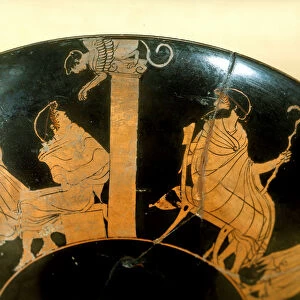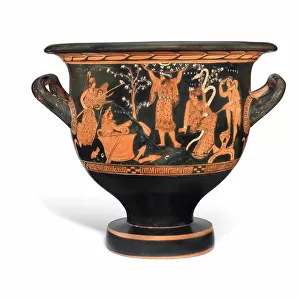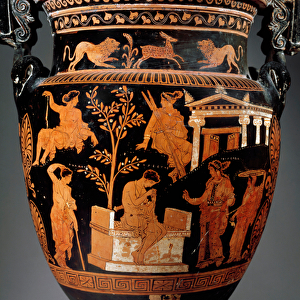Terracotta figure of three-bodied warrior. Cyprus. 7th centu
![]()

Wall Art and Photo Gifts from Mary Evans Picture Library
Terracotta figure of three-bodied warrior. Cyprus. 7th centu
Terracotta figure of three-bodied warrior. Made in Cyprus. 7th century BC. From Pyrga. British Museum. London. England. United Kingdom
Mary Evans Picture Library makes available wonderful images created for people to enjoy over the centuries
Media ID 14324586
© Thaliastock / Mary Evans
Bodies Body Cypriot Cyprus Faces Figurine Greeks Militar Shield Terracotta Warrior Warriors
EDITORS COMMENTS
1. Title: Three-Bodied Warrior: A Triumph of Cypriot Terracotta Art from the 7th Century BC This Terracotta figure of a three-bodied warrior, hailing from the ancient island of Cyprus, dates back to the 7th century BC. Discovered in the village of Pyrga, this remarkable artifact is now proudly displayed at the British Museum in London, England. The three-bodied warrior is a testament to the rich artistic heritage of ancient Cyprus, which was heavily influenced by both Greek and Near Eastern cultures during this period. Standing at approximately 30 centimeters tall, this figure showcases the intricacy and skill of Cypriot terracotta craftsmanship. The warrior's three bodies are arranged in a symmetrical formation, with each body wearing a helmeted head and carrying a shield and spear. The faces on each body exhibit distinct character, with one face displaying a determined expression, another a calm and serene countenance, and the third a fierce and battle-ready visage. The interior of the figure is as impressive as its exterior, with intricate details such as the individual fingers, toes, and even the folds of the warriors' clothing, skillfully rendered in terracotta. The warriors' helmets are adorned with decorative elements, and their shields display intricate geometric patterns. The three-bodied warrior is a unique example of ancient military art, representing the strength and power of the Cypriot army during the 7th century BC. The figure's presence in the British Museum serves as a reminder of the cultural exchanges and influences that shaped the artistic and historical landscape of the Mediterranean world. This three-bodied warrior is a must-see for anyone interested in ancient art, military history, or the rich cultural heritage of Cyprus and the Mediterranean region. Its intricate details and unique design make it a fascinating and captivating addition to the British Museum's extensive collection.
MADE IN AUSTRALIA
Safe Shipping with 30 Day Money Back Guarantee
FREE PERSONALISATION*
We are proud to offer a range of customisation features including Personalised Captions, Color Filters and Picture Zoom Tools
SECURE PAYMENTS
We happily accept a wide range of payment options so you can pay for the things you need in the way that is most convenient for you
* Options may vary by product and licensing agreement. Zoomed Pictures can be adjusted in the Cart.













